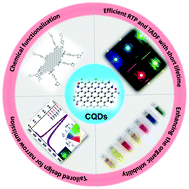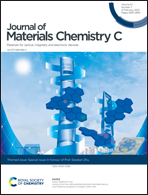Toward phosphorescent and delayed fluorescent carbon quantum dots for next-generation electroluminescent displays
Abstract
Featuring a combination of size-tunable emission wavelengths, high thermal stability, and low cytotoxicity, carbon quantum dots (CQDs) have opened up a new possibility for next-generation displays. However, the theoretically highest external quantum efficiency (EQE) limit of electroluminescent light-emitting diodes (LEDs) based on fluorescent CQDs is 5% due to the spin-forbidden nature of triplet state transitions. Comparatively, phosphorescent or delayed fluorescence CQDs are expected to overcome this limitation and allow the EQE of the devices to reach nearly 25%. At present, the preparation of CQDs with good solution processability, narrow bandwidth emission, and full-color phosphorescence or delayed fluorescence still faces great challenges. Herein, this review aims to offer a materials-chemistry perspective to tailor highly efficient phosphorescent or delayed fluorescence CQDs and present their applications in electroluminescent LEDs for the display technology. The mechanism and design principle of pure organic phosphorescence and delayed fluorescence as well as their recent advances in electroluminescent devices are summarized. Furthermore, we focus on the prospects and challenges for phosphorescent and delayed fluorescence CQDs in displays. We hope that this review will further stimulate the development of high-performance CQD-based electroluminescent displays with a combined effort from different disciplines.

- This article is part of the themed collection: Special issue in honour of Daoben Zhu


 Please wait while we load your content...
Please wait while we load your content...